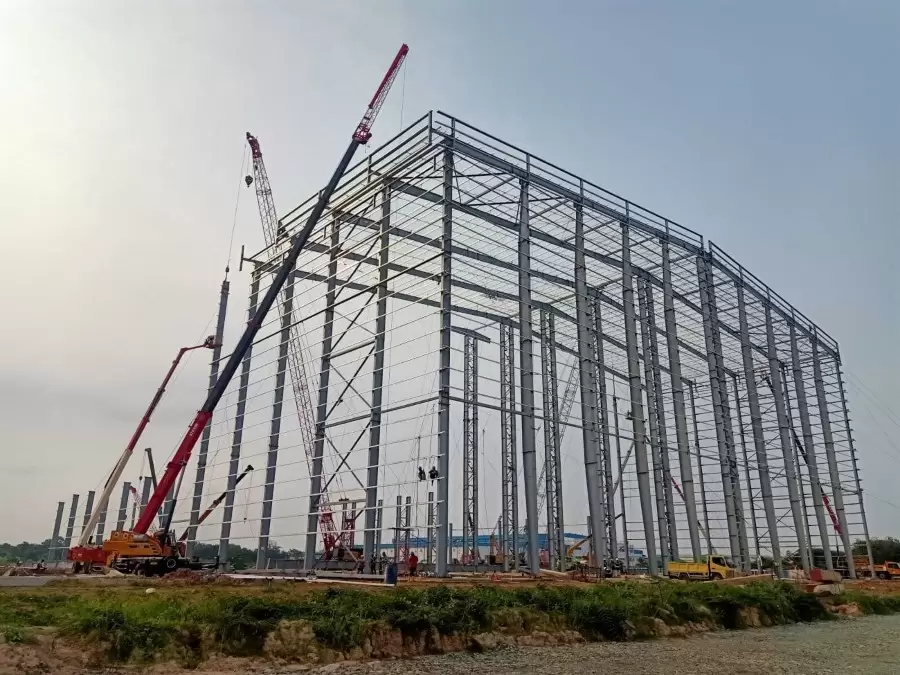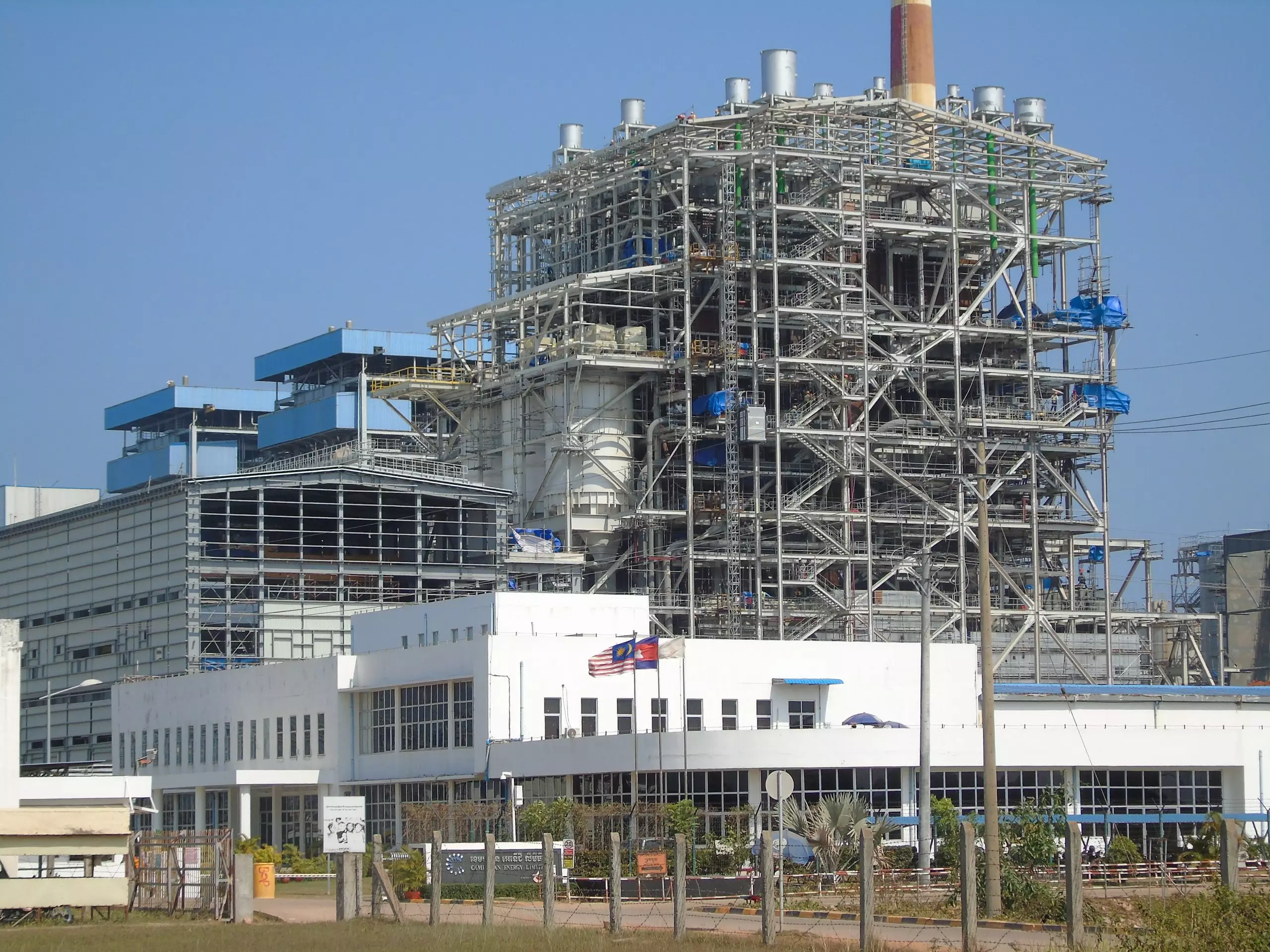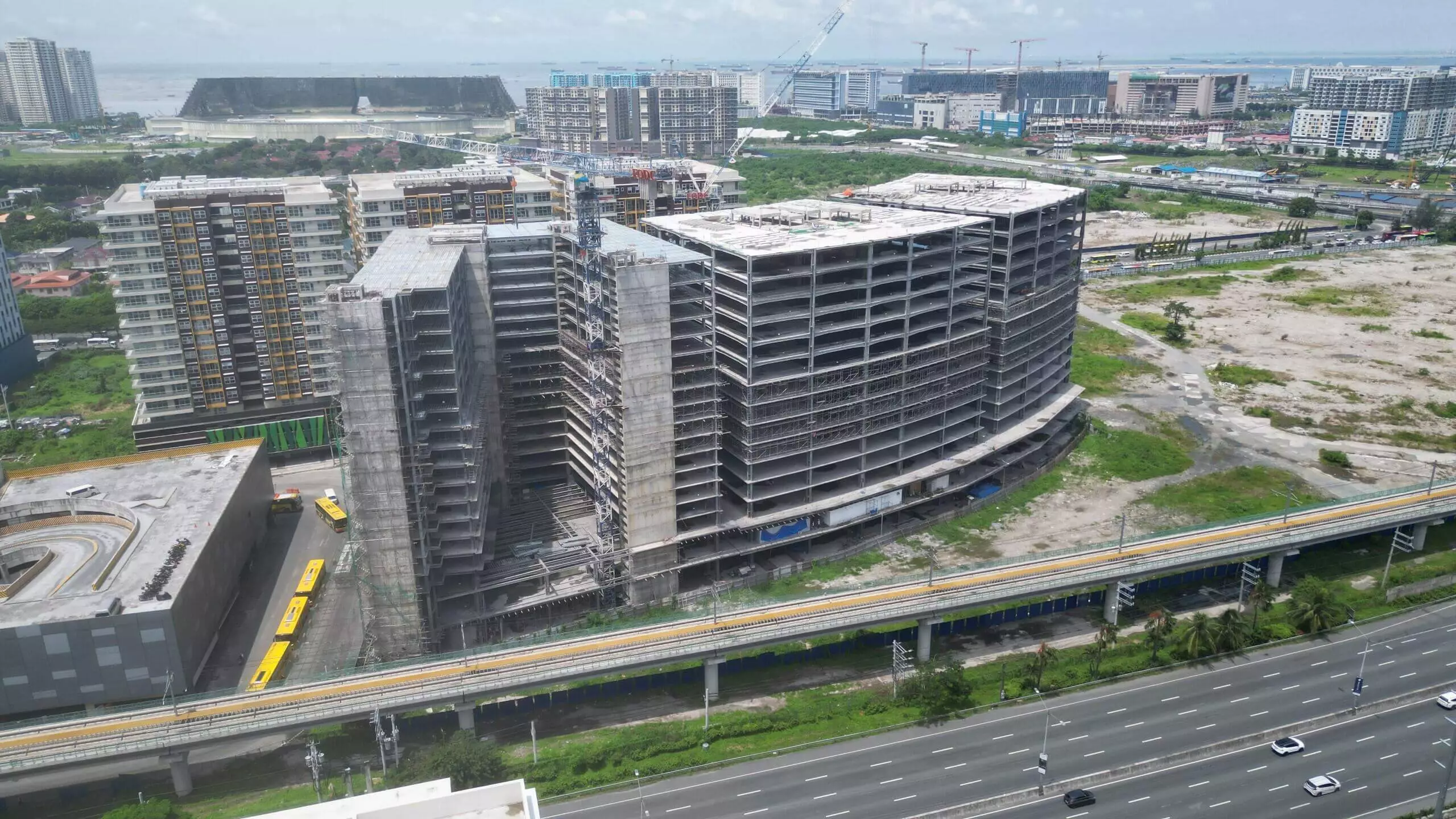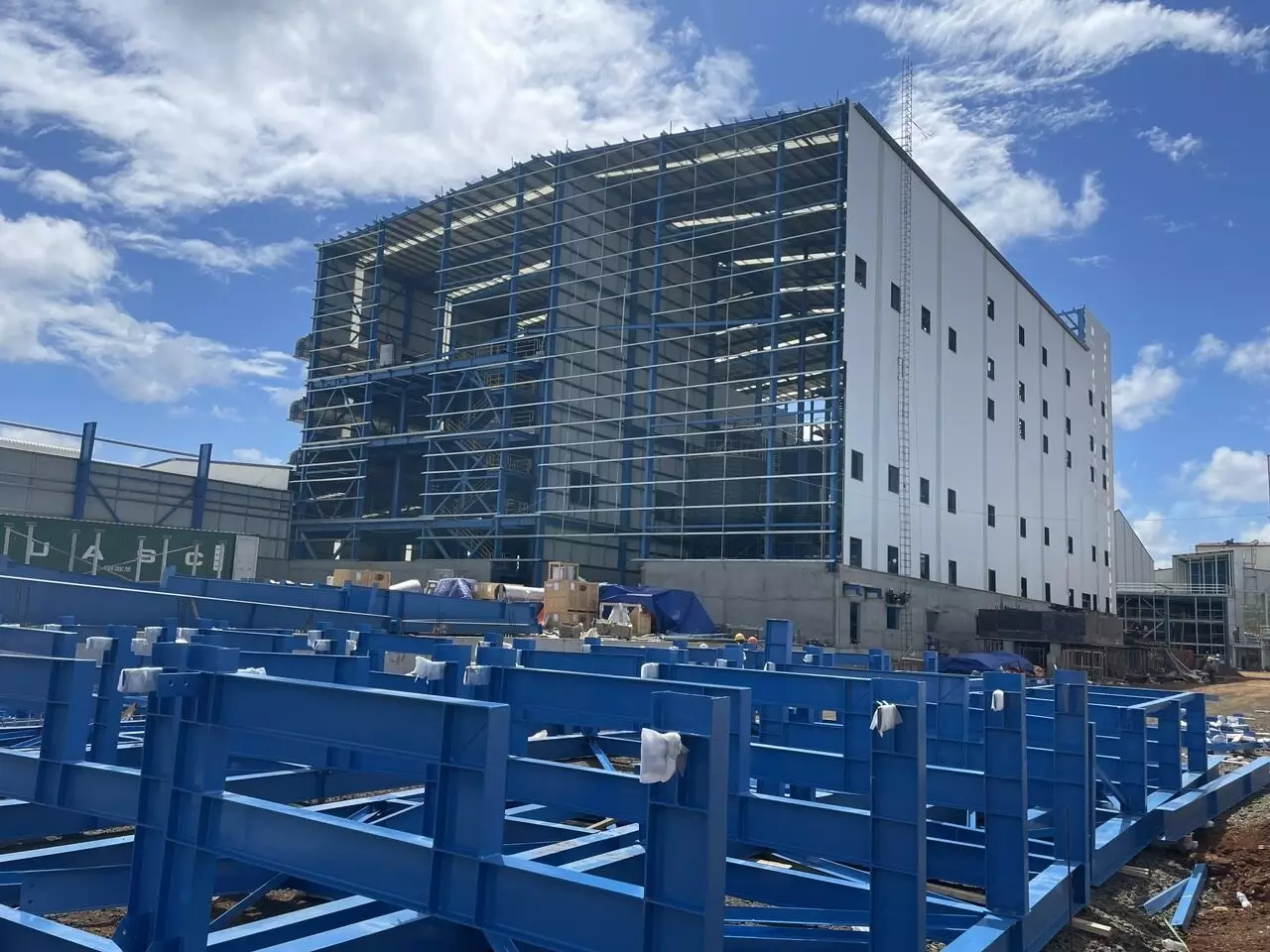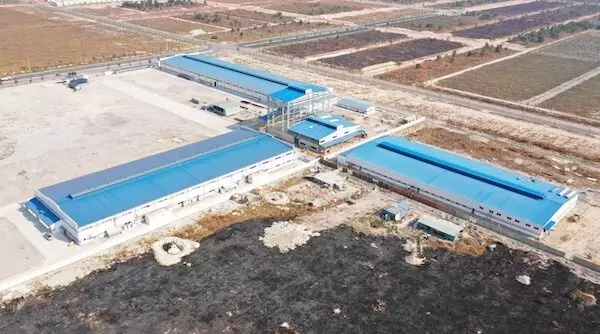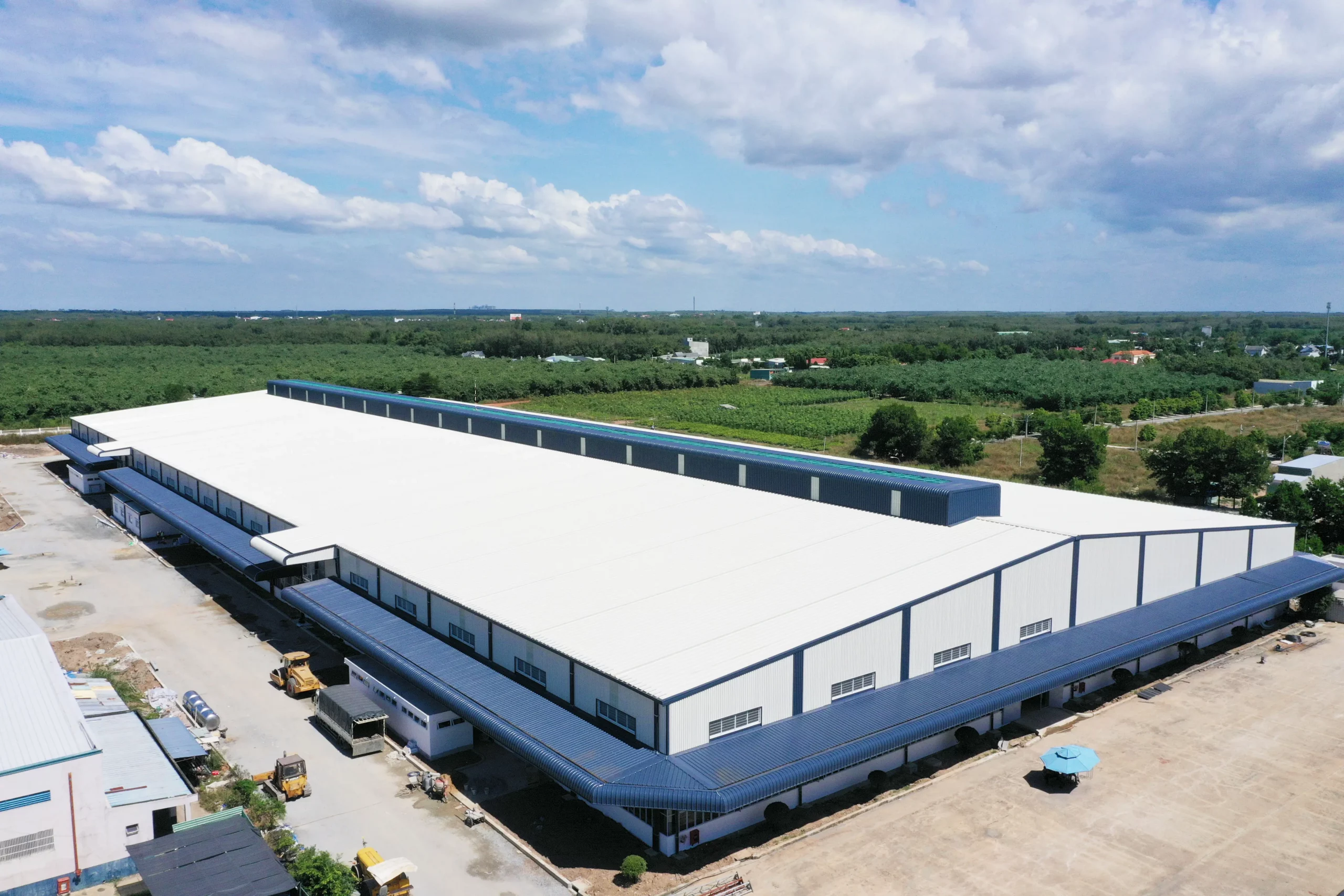In the past, concrete was the predominant material for any construction project. However, with the advancement of technology and engineering, investors now have an additional option, which is the application of steel structures in construction. So, is steel structure better than concrete? With numerous advantages, steel structures are more popular than concrete. Pebsteel analyzes in detail the characteristics of these two materials in the following article.
See more: Advantages of Steel Structure
1. Weight
The weight of steel structures and concrete exhibits a significant difference. Steel structures are typically lighter than concrete by approximately 60%, stemming from the inherent properties of these materials.
Steel structures are fabricated from lightweight alloys, ensuring robust load-bearing capabilities while still maintaining relatively low weight. Conversely, concrete is a dense and much heavier material compared to steel. The majority of the weight in concrete comes from its primary components, including cement, sand, aggregate, and water.
In construction, the weight significantly influences the overall design and structure of the project. Steel structures allow the construction of high-rise buildings without exerting excessive pressure on foundations and the ground, a particularly beneficial aspect for high-rise construction projects.
See more: Plate Girder In Steel Structure: Classifications & Applications
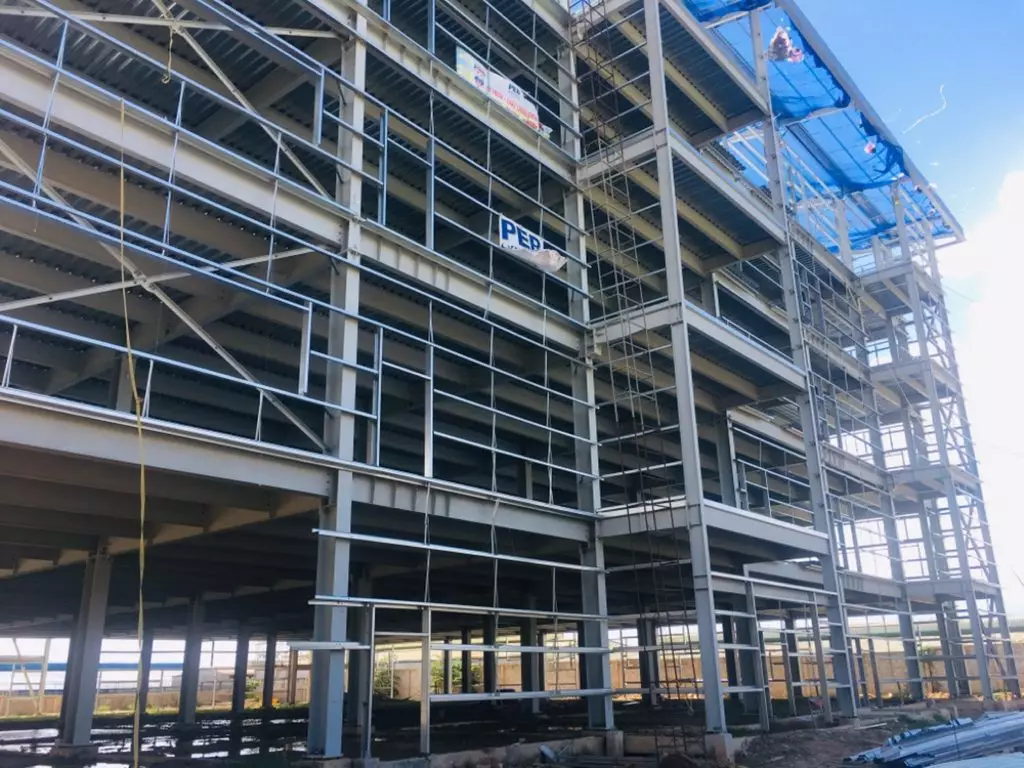
2. Load-bearing and tensile strength capabilities
Structural Steel exhibits superior load-bearing and tensile strength, accommodating tension, flexure, or compression as specified in the design drawings. Due to its flexibility and robust resistance, structural steel is often preferred in constructing high-rise buildings or structures that require both flexibility and high strength.
Concrete also possesses relatively good load-bearing capabilities, functioning in various states such as tension, compression, and flexure. However, its tensile strength is not as robust as its compressive strength. Therefore, structural steel demonstrates better load-bearing and tensile strength compared to concrete.
3. Fabrication, erection, and reparation capabilities
Steel structures are typically manufactured in specialized factories, where stringent quality control conditions are maintained. Therefore, the steel fabrication process is often swift and efficient. Steel components are processed before being transported to the construction site for assembly. The erection of steel structures is usually conducted rapidly and flexibly, with pre-designed components being connected at the site using various methods such as welding or fasteners like bolts and rivets. Moreover, when steel structures are damaged and then require repair, they are frequently expeditious and uncomplicated in comparison to concrete. Damaged parts can often be easily replaced or repaired through welding.
In contrast, concrete is often mixed on-site or at concrete mixing stations near the construction area. The on-site production of concrete can be time-consuming and requires more labor compared to the use of steel structures. Furthermore, repairing concrete structural elements typically demands more intricate technical expertise and complex procedures. Consequently, steel structures exhibit superior capabilities in terms of fabrication, erection, and reparation when compared to concrete.
See more: The Process of Structural Steel And Plate Fabrication
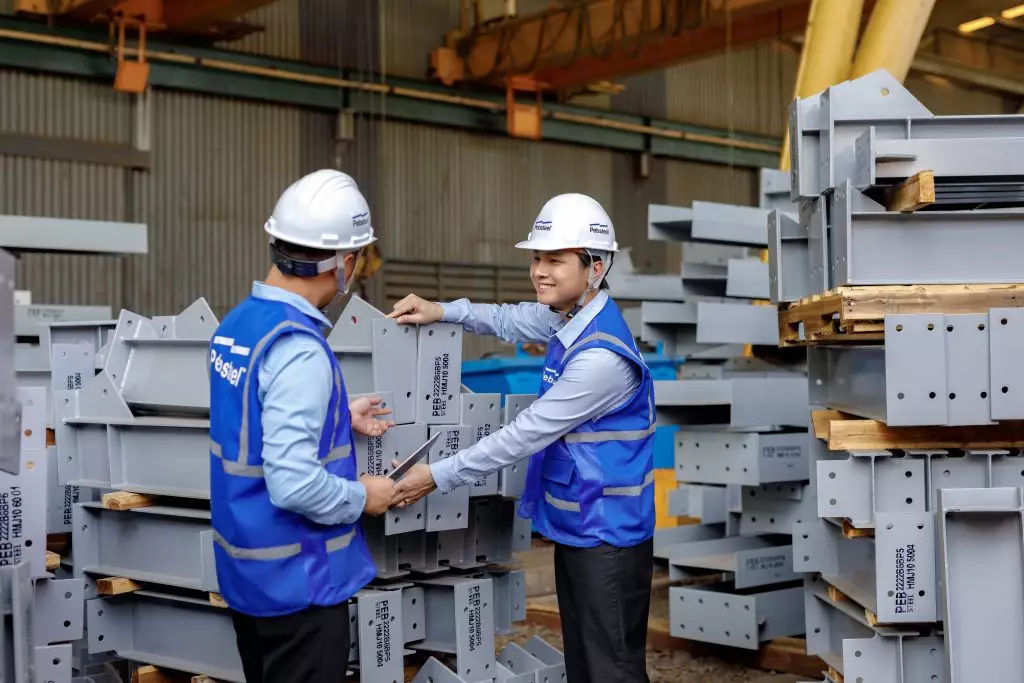
While steel structures have many advantages over concrete, this material still has some noteworthy drawbacks. The steel structures are susceptible to oxidation and corrosion when exposed to the environment, especially in humid environments with salt content. Additionally, they are vulnerable to the impact of high temperatures, posing a risk of losing elasticity and heat resistance, thereby diminishing the stability of the structure.
However, nowadays, these drawbacks can be completely overcome. Regarding oxidation, paint coating for steel is an extremely effective solution to address this issue thoroughly. For the issues of high temperatures, additional insulation materials or installing a cooling system can be applied to rectify it. In summary, the application of steel structures in construction remains a worthy consideration.
4. Conclusion
The above provides detailed information on the characteristics of steel structures and concrete in construction. It can be asserted that the application of steel structures is indeed a superior solution in modern construction. Please contact Pebsteel by phone at +84 908 883531 or by email immediately at Marketing@pebsteel.com.vn if customers require comprehensive solutions for pre-engineered steel buildings and steel structures.
*** This article is intended to provide general information about the pre-engineered steel building and steel structure industry only. For further details or clarification based on your needs, please contact Pebsteel directly.






